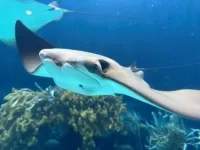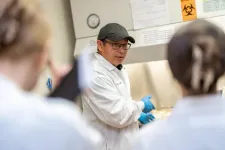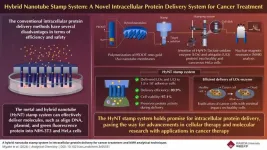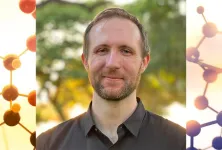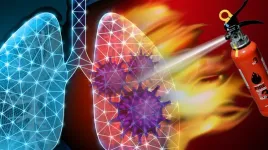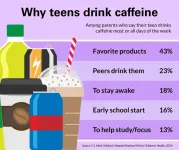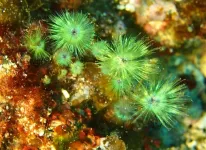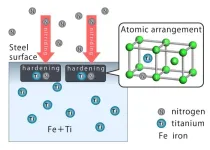(Press-News.org) In 2023, Antarctic sea ice reached historically low levels, with over 2 million square kilometres less ice than usual during winter – equivalent to about ten times the size of the UK. This drastic reduction followed decades of steady growth in sea ice up to 2015, making the sudden decline even more surprising.
Using a large climate dataset called CMIP6, BAS researchers investigated this unprecedented sea ice loss. They analysed data from 18 different climate models to understand the probability of such a significant reduction in sea ice and its connection to climate change.
Lead author Rachel Diamond explained that while 2023's extreme low sea ice was made more likely by climate change, it was still considered very rare according to the models.
She says:
“This is the first time this large set of climate models has been used to find out how unlikely 2023’s low sea ice actually was. We only have forty-five years of satellite measurements of sea ice, which makes it extremely difficult to evaluate changes in sea ice extent. This is where climate models come into their own.
According to the models, the record-breaking minimum sea ice extent would be a one-in-a-2000-year event without climate change. This tells us that the event was very extreme – anything less than one-in-100 is considered exceptionally unlikely.”
Caroline Holmes, a co-author on the study, said:
“Strong climate change – i.e. the temperature changes we’re already seeing, and those expected if emissions continue to rise rapidly - in the models makes it four times more likely that we see such a big decline in sea ice extent. This suggests that 2023’s extreme low was made more likely by climate change.”
The researchers also used the models to look at how well sea ice is likely to recover. By looking at similar events in the models, the authors found that after such extreme sea ice loss, not all of the sea ice around Antarctica returns – even after twenty years. This adds model evidence to existing observational evidence that the last few years’ low sea ice could signal a lasting regime shift in the Southern Ocean.
Louise Sime, a co-author on the study, says:
“The impacts of Antarctic sea ice staying low for over twenty years would be profound, including on local and global weather and on unique Southern Ocean ecosystems - including whales and penguins.”
Satellite records of Antarctic sea ice began in late 1978 and between then and 2015, Antarctic sea ice extent increased slightly and steadily. In 2017, Antarctic sea ice reached a record low, and has been followed by several years of relatively low sea ice extent.
There are many complex and interacting factors that influence Antarctic sea ice, making it hard to get a clear understanding of why 2023 was such a record-breaking year. Recent studies have highlighted the important role of ocean processes and heat stored below the surface, and warm sea surface temperatures during the first half of 2023 may also have contributed. Strong variations in north-to-south winds and storm systems also played a role.
Antarctic sea ice is a critical factor in our overall understanding of climate change. Sea ice formation around the Antarctic acts as an engine for ocean currents and influences weather patterns. It also protects the exposed edges of the ice shelves from waves, curbing Antarctica’s contribution to sea level rise. Sea ice is also vitally important for marine life – scientists have observed catastrophic breeding failures of emperor penguin colonies because of low sea ice in recent years.
Studies like this one are therefore critical to find out how likely rapid sea-ice losses are, and if sea ice is likely to stay low over the coming decades.
CMIP6 models rarely simulate Antarctic winter sea-ice anomalies as large as observed in 2023 by Diamond, R., et al is published today in Geophysical Research Letters. (doi.org/10.1029/2024GL109265)
Ends.
END
Record low Antarctic sea ice ‘extremely unlikely’ without climate change
2024-05-20
ELSE PRESS RELEASES FROM THIS DATE:
After hundreds of years, study confirms Bermuda now home to cownose rays
2024-05-20
For hundreds of years, the whitespotted eagle ray (Aetobatus narinari) has been considered the only inshore stingray species in Bermuda, until now.
Using citizen science, photographs, on-water observations and the combination of morphological and genetic data, researchers from Florida Atlantic University’s Harbor Branch Oceanographic Institute and collaborators are the first to provide evidence that the Atlantic cownose ray (Rhinoptera bonasus) has recently made a new home in Bermuda.
Because ...
Scientists uncover promising treatment target for resistant brain cancer
2024-05-20
For many patients with a deadly type of brain cancer called glioblastoma, chemotherapy resistance is a big problem.
Current standard treatments, including surgery, radiation, and chemotherapy using the drug temozolomide, have limited effectiveness and have not significantly changed in the past five decades. Although temozolomide can initially slow tumor progression in some patients, typically the tumor cells rapidly become resistant to the drug.
But now, Virginia Tech researchers with the Fralin Biomedical Research Institute at VTC may ...
Revolutionizing cancer treatment by intracellular protein delivery using hybrid nanotubes
2024-05-20
In today's medical landscape, precision medicine and targeted therapies are gaining traction for their ability to tailor treatments to individual patients while minimizing adverse effects. Conventional methods, such as gene transfer techniques, show promise in delivering therapeutic genes directly to cells to address various diseases. However, these methods face significant drawbacks, hindering their efficacy and safety.
Intracellular protein delivery offers a promising approach for developing safer, more targeted, and effective therapies. By directly transferring proteins into target cells, this method circumvents issues such as silencing ...
Chemist Julian West makes C&EN magazine’s ‘Talented 12’ list
2024-05-20
HOUSTON – (May 20, 2024) – Rice University chemist Julian West is one of a dozen up-and-coming young scientists featured in Chemical & Engineering News’ (C&EN) 2024 Talented 12, an annual issue of the weekly news magazine that highlights rising stars across all chemistry research disciplines.
West, an assistant professor and the Norman Hackerman-Welch Young Investigator in Rice’s Department of Chemistry, is a synthetic chemist whose lab designs novel chemical reactions. Drawing inspiration from biology, West’s research group has found ways to simplify the production of entire libraries of feedstock chemicals ...
Robot-phobia could exasperate hotel, restaurant labor shortage
2024-05-20
VANCOUVER, Wash. – Using more robots to close labor gaps in the hospitality industry may backfire and cause more human workers to quit, according to a Washington State University study.
The study, involving more than 620 lodging and food service employees, found that “robot-phobia” – specifically the fear that robots and technology will take human jobs – increased workers’ job insecurity and stress, leading to greater intentions to leave their jobs. The impact was more pronounced with employees who had ...
Study offers new detail on how COVID-19 affects the lungs
2024-05-20
In some severe cases of COVID-19, the lungs undergo extreme damage, resulting in a range of life-threatening conditions like pneumonia, inflammation, and acute respiratory distress syndrome. The root cause of those wide-ranging reactions in the lungs has until now remained unclear.
A new study by researchers at Columbia and the Columbia University Irving Medical Center sheds light on this mystery. The study found that ferroptosis, a form of cell death first named and identified at Columbia in 2012, is the major cell death mechanism that underlies COVID-19 lung disease. The finding indicates that deliberately halting ...
Body’s ‘message in a bottle’ delivers targeted cancer treatment
2024-05-20
Researchers at Karolinska Institutet in Sweden have succeeded in delivering targeted cancer treatment via small membrane bubbles that our cells use to communicate. A new study published in Nature Biomedical Engineering shows that the treatment reduces tumour growth and improves survival in mice.
When our cells communicate, they send out small membrane bubbles known as extracellular vesicles which contain various signalling molecules. Interest in these tiny bubbles, sometimes referred to as the body’s ...
1 in 4 parents say their teen consumes caffeine daily or nearly every day
2024-05-20
ANN ARBOR, Mich. – A quarter of parents report that caffeine is basically part of their teen’s daily life, according to a national poll.
Two in three parents think they know whether their teen’s caffeine intake is appropriate and which products have too much caffeine. Yet a third aren’t able to identify recommended caffeine limits, according to the University of Michigan Health C.S. Mott Children’s Hospital National Poll on Children’s Health.
“Our report suggests parents may not always be aware of how much they should be limiting caffeine consumption for teens,” said poll co-director and Mott ...
What makes some brown algae shimmer and others not?
2024-05-20
Compartments of consistently sized, tightly packed microspheres are what makes some brown algae shimmer like opal. The Kobe University discovery not only sheds light on the mechanism behind the alga’s structural coloration, it is also the first to spot the effect in an order of brown algae other than the two where it was known to occur.
Most brown algae are indeed yellowish-brown, but scuba divers noticed that a species resembling Sporochnus in the order Sporochnales shimmers like peacock feathers in yellow, ...
Seeking stronger steel, systematic look at 120 combinations of alloy elements provides clues
2024-05-20
Decarbonization of automobiles not only requires a shift from gasoline engines to electric motors, but also quality steel parts that help the motors run while lessening the weight of vehicles. High-performance steel materials can offer quieter rides and resist the wear and tear from high-speed rotation in motors. To create them, the process of modifying the steel surface with carbon, nitrogen, and alloy elements needs to be optimized.
To understand the interactions between elements in steel, a systematic investigation ...
